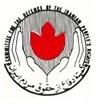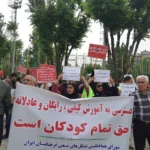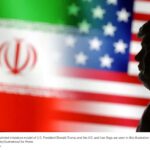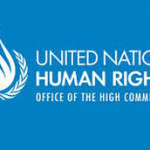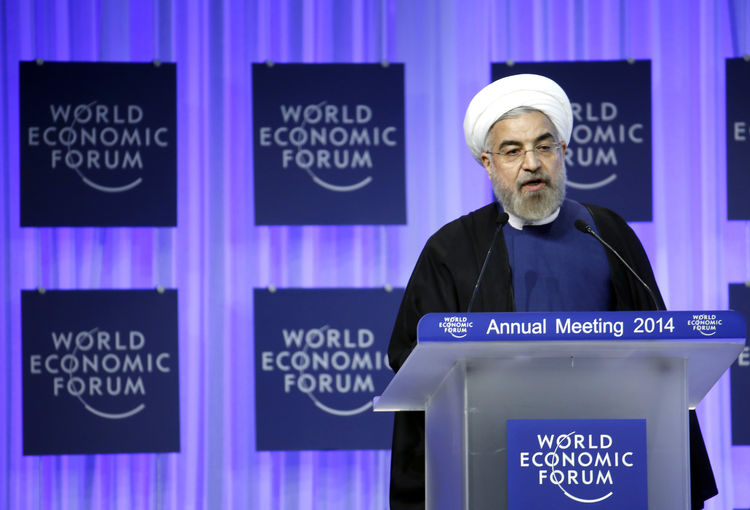
A number of commentators have compared President Rouhani’s policies of opening Iran’s markets to Western business with those of China’s Deng Xiaoping following the death of Mao Zedong some four decades ago [1]. A closer look at Mr. Rouhani’s open-door economic policies indicates, however, that they are more akin to those of Boris Yeltsin’s Russia following the collapse of the Berlin Wall than those of China since Deng Xiaoping.
This study makes an argument that both in theory and practice the Rouhani administration is following an economic model that is widely known to create indebtedness, warped industrialization and dependent development, which also often leads to a loss of political/geopolitical independence. To this end, the study focuses on the administration’s approach to trade and development, to foreign capital, and to industrialization and technological transfer.
The opening of China to foreign capital since Deng Xiaoping has been very methodical and highly disciplined. The country’s leaders have been vigilant against allowing their country to become a consumer market for foreign goods and services. They have consciously shunned the deceptive theory of free trade, which tends to punish the economically weak and reward the strong. Instead, they have followed the model of smart or strategic trade, which means protecting one’s infant industries against the mature or more competitive foreign producers while, at the same, promoting one’s exports where one is competitive. Accordingly, they have been very selective in their choice of foreign capital: while encouraging foreign direct investment, or investment in manufacturing, they have steadfastly resisted importation of commercial or commodity capital, that is, capital in the form of finished goods and services.
By contrast, the Rouhani administration’s efforts to re-integrate Iran into global markets has been inspired by the doctrine of economic liberalism/neoliberalism and the concomitant theory of free trade which, as just mentioned, tends to benefit the economically strong and hurt the weak or noncompetitive.
Threat of Deindustrialization
Prior to President Rouhani’s open-door economic policies, Iran viewed economic sanctions as an (unsolicited) opportunity, a blessing in disguise, to become self-reliant: to rely on domestic talents and resources in order to become economically self-supporting by producing as many of the consumer goods and industrial products as possible. And it did, indeed, made considerable progress in scientific research, technological know-how and manufacturing industries.
Iran became self-sufficient in producing many of its industrial products such as home and electric appliances (television sets, washers and dryers, refrigerators, washing machines, and the like), textiles, leather products, pharmaceuticals, agricultural products, processed food, and beverage products (including refined sugar and vegetable oil). It made significant progress in manufacturing steel, copper products, paper, rubber products, telecommunications equipment, cement, and industrial machinery. Iran also produced the largest operational population of industrial robots in West Asia [2].
Most remarkable of Iran’s industrial progress, however, can be seen in the manufacture of various types of its armaments needs. Iran’s defense industry has taken great strides in manufacturing many types of arms and equipment. Iran’s Defense Industries Organization (DIO) has produced its own tanks, armored personnel carriers, guided missiles, radar systems, a guided missile destroyer, military vessels, submarines and a fighter plane. In 2006 Iran exported weapons to 57 countries. It is also developing a sophisticated mobile air defense system dubbed as Bavar 373 [3].
Iran’s scientific, technological and manufacturing progress under conditions of war and sanctions shows that, despite the oppressive economic sanctions, it managed to emerge as an
 industrialized country. Even the proverbial bible of the world financial elites, The Economist magazine of London, recently acknowledged that “Iran has a diversified economy, including a significant manufacturing sector” [4].
industrialized country. Even the proverbial bible of the world financial elites, The Economist magazine of London, recently acknowledged that “Iran has a diversified economy, including a significant manufacturing sector” [4].
Alas, the Rouhani administration’s open-door economic policy and the resulting flood of foreign goods, combined with the neglect of domestic producers, especially of small producers, have greatly undermined these technological gains. Inspired by the free-trade philosophy, the administration has removed or drastically reduced import duties on numerous foreign goods and services, including imports of products for which there are domestic substitutes.
According to Mohammed Serfi, an Iranian economics analyst, the degree of import-substitution in Iran could be as high as 70%; meaning that as much as 70% of Iran’s imports could be substituted by domestically produced products. Yet, due to the Rouhani administration’s free-trade policy, the crucially important industrialization strategy of import-substitution—vigorously pursued by all the currently more developed countries at the earlier stages of their development—is ignored. [5].
Complaining about the administration’s lack of an economic strategy, Gholam-Hosein Shafe-ei, former chairman of Iran’s Chamber of Commerce, points out that while relief from economic sanctions is obviously necessary it is not sufficient; perhaps more importantly are government-championed macroeconomic objectives and carefully-guided ways or plans to achieve those objectives. In the absence of clearly defined economic objectives, Shafe-ei further points out, Iran could become a heaven for foreign producers while many of domestic producers would be driven out of business [6].
Sadly, this is exactly what has happened: “. . . many of domestic producers . . . driven out of business.” According to a recent Fars News report, the excessive flow of foreign goods into Iran’s markets has led to the idling or closing down of 14,800 manufacturing or production units. The report further indicated that, using budget constraints as justification, the administration has even shut down many research projects [7]. According to Hamid Haaj Esmaili, an Iranian expert on the country’s labor market, “65 percent of workshops or production units in industrial parks have gone out of business” [8].
Evidence thus indicates that if these inauspicious developments are not tempered, stopped or reversed, Iran would be experiencing an ominous trend or phenomenon called deindustrialization, President Rouhani’s and his economic team’s good intensions notwithstanding.
Threat of Indebtedness and Loss of Sovereignty
The Rouhani administration has shown atnotwihstanding notwithstanding inancial elite, strong tendency to external borrowing for financing its spending needs: to pay for its imports of goods and services, or for its domestic outlays. This tendency to debt financing threatens to burden Iran with unsustainable debt a la Greece, or other south/east European countries.
Soon after the formal implementation of the nuclear deal on 16 January 2016, the president took a trip to Europe in which he embarked on a shopping spree of big-item purchases and the signing of a number of business contracts that tend to ultimately commit Iran to a debt obligation of more than $50 billion. The office of the French president estimated the total value of the signed deals during Mr. Rouhani’s visit to France would be approximately €30 billion ($32.8 billion). The accord with Airbus alone (for the purchase of 118 aircrafts) is worth €22 billion ($25 billion). President Rouhani and his entourage also signed contracts with Italy worth about $18 billion, which included oil explorations and automobile deals [9].
Details or terms of agreement of these deals are not divulged to the Iranian people. One thing is clear, however: the deals are to be financed through external borrowing. To secure borrowing in global financial markets, however, Iran would need a favorable rating of its creditworthiness by the international rating agencies such as Moody’s, Standard & Poor’s and Fitch. This explains why the Rouhani administration is actively soliciting credit rating by these agencies. “An official says Iran is in discussions to get its first credit rating as the country is emerging from years of sanctions and seeking to put its economy on strong footing” [10]. That official turned out to be President Rouhani’s Chief of Staff Mohammad Nahavandian, who told Reuters in an interview in London, “We are in negotiations with some of these rating agencies,” adding that he expected the agencies to provide a full rating [11].
Borrowing from abroad is not good or bad as such; it all depends on how the borrowed money is spent or invested. If it is invested productively, that is, in manufacturing projects that would yield a rate of return higher than the rate of interest paid for the borrowed capital, then borrowing can play a positive role in the economic development of the borrowing country, without the problem of repayment. On the other hand, if borrowing is to import consumer product, especially luxury products, it can lead to indebtedness and the inability to pay.
Sadly, President Rouhani and his economic advisors seem to have been oblivious to the importance of this critical distinction when they devoted the major bulk of the debt undertaken in France ($25 billion out of $32.8 billion) to the purchase of aircrafts that, incidentally, can be accommodated by only one airport in Iran, The Imam Khomeini Airport in Tehran. 73 out of the projected 118 Airbus airplanes to be purchased by Iran are the long-haul, wide bodied planes, including 12 A380 superjumbos [12].
Inappropriate Choice of Economic Paradigm: Free Trade vs. Strategic Trade
To criticize President Rouhani’s economic policies is not to question his or his advisors’ intentions or objectives of trying to bring about economic development in Iran. It is, rather, to question the means they employ—free trade and economic liberalism/neoliberalism—in order to achieve those ends. They must certainly be eager to pull their county’s economy out of the deep recessionary hole. Why, then, do they insist on pursuing economic policies that have proven—time and again, and in country after country—to be resulting in economic problems of indebtedness, deindustrialization and dependence?
The answer, in a nutshell, is that the president and his economic advisors seem to be infatuated with an economic paradigm that is regrettably detrimental to the goal of self-sustaining development for the less-developed countries. It is an inappropriate, unsuitable and misleading paradigm, crafted by economic ideologues or theorists of the more developed countries as economic “science,” whose practical outcome for the less-developed economies has been trade deficit, indebtedness, dependent development, and extreme socio-economic inequality. It is the notorious economic liberalism of the neoclassical school of economic thought, which postulates that free trade and unrestricted pursuit of self-interest lead to economic expansion and prosperity for all; that state-sponsored social safety-net programs or strategic trade policies are “costly trade-offs” in terms of lost productivity; and that, therefore, government intervention in economic affairs must be avoided.
According to this doctrine, solutions to economic stagnation, poverty and under-development lie in unhindered operations of capital and unreserved integration into world capitalist system. Recessions, joblessness and economic hardship in many less-developed countries are not so much due to economic mismanagement, uneven or unfair competition in international markets, or the nature of global capitalism as they are because of government intervention and/or exclusion from world capitalist markets.
Free trade is a major component of this school of economic thought. It postulates that international trade would be most efficient and most beneficial to all trading partners if it is grounded on an international division of labor that is based on specialization on the basis of comparative cost advantages. Specifically, it means that since country X, for example, cannot produce all its material needs efficiently, or equally efficiently, it should therefore prioritize its production objectives. It should concentrate on, or specialize in, the production of those products in which it has a comparative cost advantage and, then, trade their surplus with other countries in exchange for those products in which it lacks such an advantage. And if this pattern of trade is adopted by all countries of the world, international trade would be a win-win proposition for all trading partners.
There is a prima facie reasonableness to this theory: by forcing producers in the less-developed countries to compete with the producers of the more-developed countries, free trade would lead to increased efficiency and, therefore, economic growth and prosperity for all. Despite this apparent reasonableness, however, this proposition is highly deceptive. It is axiomatic that, to be fair or meaningful, competition ought to take place on a level playing ground. Otherwise, the weak or non-competitive would be crushed.
There is yet another superficial or deceptive reasonableness to the theory of free trade. It stems from the fact that the premise, or the starting point, of the theory—that at any moment in time each country has a comparative advantage in producing certain products—cannot be contested or rejected. It is, indeed, a self-evident premise. The objectionable part of the theory stems from the fact that it portrays this self-evident proposition, the short-term or temporary advantage, as natural or inherent advantage that should serve as grounds for long-term or permanent specialization in international trade. Obviously, trade on the basis of this theory of specialization is bound to condemn or relegate the less-developed countries to specialization in, or production of, primary or less-processed products while leaving the production of, or specialization in, high-tech, high-value-added products to the more developed countries.
A number of critics of this theory of trade have made a distinction between static and dynamic advantages. These critics do not view a country’s endowments or advantages as inherent, natural or permanent, but carefully acquired through deliberate policies and institutions. This means that a country can and should take advantage of its short-term advantages in order to create dynamic advantages over time. More specifically, whatever endowments and advantages a country might have at a given moment in time are, in large part, products of past policies and developments, and that, therefore, they can be changed over time and new, superior advantages can be created [13].
All of the now more developed countries adopted elaborate regulatory strategies in the early stages of their industrialization in order to gain trade advantages. These included not only the somewhat common protectionist policies of export subsidies and import tariffs but also the more intricate and detailed strategies such as regulation of production methods, control of output quality in export industries, training of skilled labor force in such industries, and the like.
The earliest systematic theorizing of international trade in modern times dates back to the classical Mercantilist doctrine of the sixteenth to eighteenth centuries. As the Protestant revolutions shattered Roman Catholic Europe into competing national states, nation-building absolutist princes embraced Mercantilist policies.
The essence of that doctrine is an extensive state regulation of the economy, especially of foreign trade, in order to mobilize economic resources, both domestically and internationally, in the interest of national industrialization and development. Not surprisingly, the emerging European nation-states from the ruins of the Middle Ages viewed this economic doctrine as the cornerstone of their nation-building strategy.
Mercantilists relied heavily on trade to bring about development. They viewed trade surpluses as a major source of investment, accumulation and growth. From this followed an active policy of export promotion and import curtailment, as this would maximize the net inflow of funds or investible resources into a country. The impact of trade on development was so important in this view that it is sometimes said that to Mercantilists a nation’s balance of trade reflected that nation’s international balance of power, as measured by economic, not military, strength.
While free trade has almost always been the bible of the economically strong, self-righteously preached to the weaker trading partners, the fact is that, historically, all of the now industrialized countries initially adopted the protectionist strategies of Mercantilism to jump-start their economic development. They became champions of free trade only after becoming competitive or dominant in global markets by virtue of earlier policies of Mercantilism/protectionism. This includes the UK, the US, France, Germany, Japan, and South Korea.
Free Trade vs. Smart Trade: Static vs. Dynamic Advantages—the Case of the UK
Before achieving international market superiority in the second half of the eighteenth century, the UK diligently shunned free trade doctrine. It relied heavily on Mercantilist policies for economic gains in global markets. This meant that the British government played an active role in mobilizing and channeling both domestic and external economic resources toward industrialization and development of the country. Colonial policies of territorial conquest and transfer of their economic resources to England was a major part of the Mercantilist theory of industrialization. So were the strict policies of protection of British industries against their international rivals, especially against the Dutch manufacturers who were at the time more efficient than the British.
More than two centuries of Mercantilist policies helped England achieve international economic superiority by the second half of the eighteenth century. International industrial superiority, combined with the disproportionately high cost of maintaining a gigantic colonial apparatus, led many of the leading British elite to suggest in the late eighteenth and early nineteenth centuries an alternative to Mercantilism in pursuit of international economic gains.
That alternative view (which was most effectively expounded by a number of well-respected economic thinkers of the time such as Josiah Tucker, Adam Smith and David Ricardo) maintained that Britain’s ability to dominate international markets by virtue of its competitive market forces made Mercantilist policies, as well as most of its colonial military and administrative apparatus, superfluous.
The question the British manufacturers and their political representatives in the Parliament were grappling with at this time was how to end Mercantilist policies and the formal colonial ties, and cut its enormous costs, without disturbing the existing pattern of trade specialization that England had methodically established as result of two centuries of successful Mercantilist policies. The essence of that pattern of trade specialization, also called international division of labor, consisted of Britain supplying its satellites of trading partners with manufactured products in exchange for their minerals and raw materials products.
Proponents of transition to free trade and economic liberalism argued that, once having achieved economic superiority, England’s continued support of protectionist policies of Mercantilism could actually undermine its economic leadership because such policies provided other countries the opportunity to achieve what England had accomplished as a result of pursuing those policies for two centuries. On the other hand, they further argued, if England switched its trade policies from Mercantilism to free trade and, more importantly, prevailed in having its trading partners adopt such policies it could thereby deter them from nurturing their own industrial independence, that is, from adopting protectionist policies vis-à-vis superior British industries. In other words, free trade doctrine was beneficial to England only if it was adopted internationally.
Having achieved worldwide industrial superiority by virtue of Mercantilism and colonialism, England then moved to impose free trade policy on world markets so that it could maintain the existing international division of labor, hence its industrial leadership, through free trade instead of regulated or restricted trade. Whereas proponents of the new doctrine called it laissez-faire, or economic liberalism, always portraying it as freedom or democracy in general, critics called it “free trade imperialism,” signifying a preference by the economically superior to use its market power for economic gains instead of military power [14].
Free Trade vs. Smart Trade: Static vs. Dynamic Advantages—the Case of the U.S.
By the time the United States gained its independence, England had already achieved economic superiority and competitive edge in international markets. Thus as England was gradually abandoning the Mercantilist principles of trade and development in favor of the free trade doctrine, the United States was invoking those principles in pursuit of its own economic development and nation-state building objectives. Alexander Hamilton (1755-1804) and Friedrich List offered the strongest policy and theoretical arguments against the emerging doctrine of economic liberalism, which, incidentally, had just received a new publicity boost by the publication of Adam Smith’s The Wealth of Nations in 1776.
Hamilton set out to prove that the laissez-faire doctrine, promoted at the time by the technologically stronger European countries, was inappropriate for the fledgling, non-competitive U.S. economy. Instead, he invoked the major Mercantilist arguments in support of a state-guided trade and development policy.
The arguments that the European champions of free trade counter-posed to Hamilton’s views were similar to those of the free trade advocates of our time. They argued that the best trade policy for the United States was to focus on and specialize in the area of its “natural” endowment or advantage: agriculture, “on the account of their immense tracts of fertile territory, uninhabited and unimproved” [15].
While acknowledging that, at the time, the United States had a trade advantage in agriculture, Hamilton reasoned that it did not follow from this that, therefore, the advantage in manufacturing should be left to Europe; and that the United States, while taking advantage of its superior agriculture, should and must try to create advantages also in manufacturing industry. Industrialization and diversification of the economy was not only important in and of itself, it also enhanced whatever advantage the U.S. already had in agriculture. Industrial diversification, Hamilton further pointed out, would also reduce the vulnerability of the nation’s largely agricultural economy to external economic shocks/forces [16].
Hamilton enumerated a number of specific policy measures that would help the United States achieve international competitiveness—measures that were actually followed by the U.S. before it achieved global competitiveness more than a century later. These included: “Protection Duties—or duties on those foreign articles which are the rivals of the domestic ones intended to be encouraged”; “Prohibition of the Exportation of the Materials of Manufactures,” that is, the raw materials that are needed for domestic manufacturing; “Pecuniary Bounties [and] Premiums,” or subsidies to domestic producers and/or exporters; “The Exemption of the Materials of Manufactures From [Import] Duty; The Encouragement of New Inventions and Discoveries; [and] Judicious Regulations for the Inspection of Manufactured Commodities” [17].
Like Hamilton, Friedrich List (1772-1832) argued that, by throwing the U. S. infant industries into competition with the mature British ones, free trade would impair the process of industrialization and development in the United States. He strongly defied trade specialization endorsed by the British economists Adam Smith, David Ricardo and their co-thinkers as condemning the United States to specialize in agriculture, thereby depleting its soil and mines while stinting its chances of advancing its manufacturing industries. Also like Hamilton, List did not deny the advantages of free trade under “right” circumstances, that is, a level playing or competing grounds, or comparable technological advancement between trading nations. In other words, both List and Hamilton defended protectionism as a temporary or intermediate stage to nurture fledgling industries: once protective policies achieved their goals and trading partners were on an equal technological footing, free trade could reign.
The relevance of List’s and Hamilton’s recommendations for trade and development needs of the U.S. of their time to trade and development needs of many of today’s less developed countries is unmistakable. But because of the competitive edge the United States now enjoys in global markets, it denies the developing world such recommendations—in essence, telling the developing countries: do what we say, not what we do, or did!
Concluding Remarks?
The brief overview of the early industrialization policies of the UK and the US provided here clearly shows that, contrary to what they claim today, these countries diligently shunned the free trade paradigm in favor of strategic/Mercantilist policies in the early stages of their development. Not only did the UK and the US follow this pattern of economic development, but so did all of the other presently advanced countries such as Germany, France, the Netherlands, Japan and South Korea [18]. This overview also shows that the currently more developed countries became advocates of free trade only after they became competitive in international markets by virtue of earlier strategic/Mercantilist policies of trade and development.
Despite the relevance and applicability of these instructive experiences to trade and development needs of Iran, they are altogether ignored by President Rouhani and his economic advisors. The president and his economic team are sometimes criticized as West-oriented or Euro-centric. The real problem, however, is not so much that they are West-centric, but that they are West-centric in a misplaced, inappropriate and mistaken way: Instead of drawing logical lessons from these highly educational experiences, which means following trade and development strategies of the presently more developed countries in their earlier stages of industrialization, the Rouhani administration follows their strategies of today, of mature or advanced capitalism. In other words, instead of pursuing the strategic or Mercantilist paradigm of trade and development, they follow the paradigm of free trade and economic liberalism.
Iran’s economy is severely anemic, and the overwhelming majority of its citizens are under tremendous financial distress. Sadly, though, economic doctors of the country tend to insist on issuing wrong prescriptions for the ailing economy: free trade, unrestricted imports, lack of an export promotion policy (except for oil and other raw materials), tendency to borrow from abroad, lack of a serious banking/financial regulation—in short, lack of any economic plan, guidance or direction. Unless these misguided, anti-developmental policies are modified or reversed, Iran’s economic difficulties are bound to deteriorate: its markets flooded by foreign products, its manufacturing base weakened, its foreign debt escalated and, with it, its national sovereignty compromised.
References
[1] See, for example, Patrick Buchanan, Is Iran Taking the China Road?; and Pepe Escobar, Iran: The New China?
[2] Wikipedia, Economy of Iran.
[3] Ibid.
[4] The Economist, “All that glitters: Assessing opportunities and risks in post-sanction Iran,” A report by The Economist Intelligence Unit, spring 2016, p. 3 (of the PDF version).
[5] Mohammed Serfi, “Gentlemen, the Party is Over,” in Farsi:
آقایان! ضیافت تمام شد!(یادداشت روز).
[6] For one of many sources on the unbridled flow of foreign products into the Iranian markets see, for example, برجام تبدیل به مجوز واردات و تقسیم رانت بین گروههای سیاسی شده.
[7] Fars News, در نشست ۱۰ اقتصاددان ائتلاف اصولگرایان مطرح شد.
[8] Fars News, چراغ 65 درصد بنگاههای شهرکهای صنعتی کشور خاموش شد .
[9] Russia Today (RT), Iran to purchase 118 Airbus planes & set up joint venture with PSA Peugeot Citroen.
[10] Presstv.ir, Iran in talks to get first credit rating.
[11] Ibid.
[12] Russia Today (RT), Iran to purchase 118 Airbus planes & set up joint venture with PSA Peugeot Citroen.
[13] See, for example, Pankaj Mishra and Elif Shafak, “Worldwide Mutinies against Globalization”; or Bela Balassa and Marcus Noland, “The changing comparative advantage of Japan and the United States,” Journal of the Japanese and International Economies, Volume 3, Issue 2, June 1989, Pages 174-188.
[14] See, for example, John Gallagher and Ronald Robinson. “The Imperialism of Free Trade,” The Economic History Review, Vol. 6, No. 1 (August 1953), pp. 1-15.
[15] Alexander Hamilton, “Report on Manufacture,” reprinted in The Theoretical Evolution of International Political Economy, by George T. Crane and Abla Amawi, Oxford University Press 1997, pp. 37-47. This quotation is from pp. 37-38.
[16] Ibid.
[17] Ibid., pp. 44-46.
[18] For a thorough discussion of these issues see Michael Hudson,Trade, Development and Foreign Debt, ISLET (2009); for the cases of Japan and other South-East Asian countries see Pankaj Mishra and Elif Shafak, “Worldwide Mutinies against Globalization”; and for the case of South Korea see Alice Amsden, Asia’s Next Giant: South Korea and Late Industrialization, Oxford University Press, 1989.
Ismael Hossein-zadeh is Professor Emeritus of Economics (Drake University). He is the author of Beyond Mainstream Explanations of the Financial Crisis (Routledge 2014), The Political Economy of U.S. Militarism (Palgrave–Macmillan 2007), and the Soviet Non-capitalist Development: The Case of Nasser’s Egypt (Praeger Publishers 1989). He is also a contributor to Hopeless: Barack Obama and the Politics of Illusion.

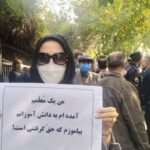

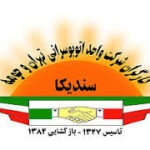


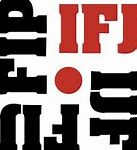



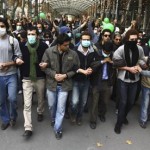

 Posted in
Posted in 